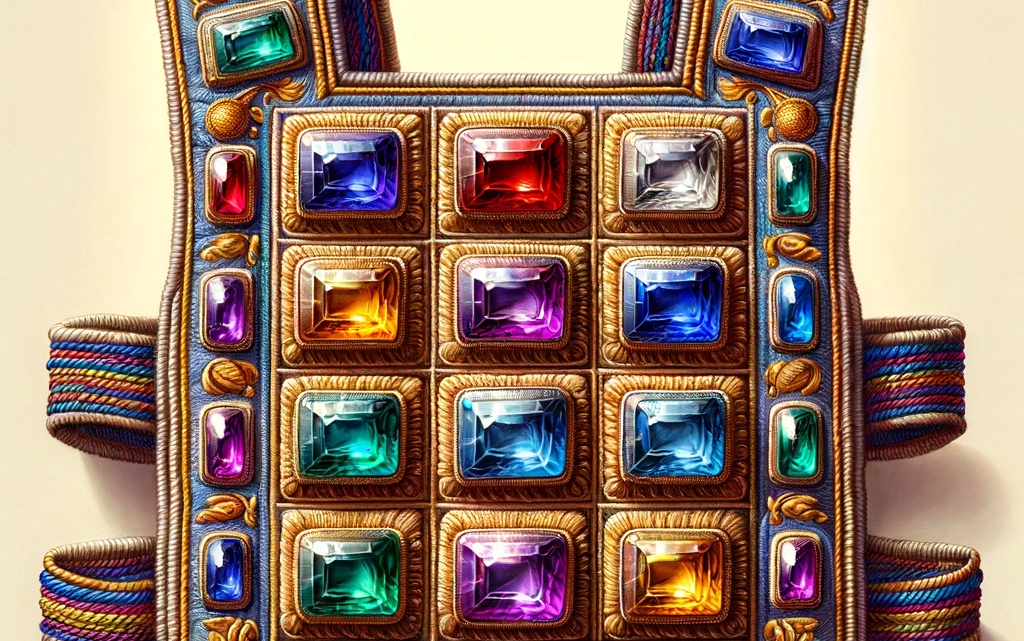“Sacred Threads: Unraveling the Divine Symbolism in the High Priest’s Garments”

In the annals of ancient Israel’s religious history, the High Priest’s garments stand as a testament to the intricate relationship between divine command and human representation. These garments, as detailed in Exodus 28, were not merely ceremonial attire but a rich tapestry of spiritual symbolism, intertwining Rabbinical insights and biblical narratives. This exploration, spanning approximately 2000 words, delves into the sacred vestments, their profound symbolism, and the unique practices associated with them, including the tradition of the High Priest standing barefoot in the presence of the divine.
The Ephod: Bridging Heaven and Earth (Exodus 28:6-14)
The ephod, a vest-like garment of exquisite craftsmanship, symbolized a nexus between the divine and the earthly. Crafted from gold, blue, purple, and scarlet yarn, and fine linen, it was a visual representation of the heavens and royalty. The ephod’s shoulders bore two onyx stones, each engraved with six names of the tribes of Israel, as commanded in Exodus 28:12: “And thou shalt put the two stones upon the shoulders of the ephod for stones of memorial unto the children of Israel.” This feature signified the High Priest’s role as Israel’s representative before God.
The Breastplate of Judgment: Divine Guidance (Exodus 28:15-30)
The Breastplate of Judgment was central to the High Priest’s attire. Set with twelve stones, each representing a tribe of Israel, this piece served as a symbol of unity and divine guidance. Inside, the Urim and Thummim, shrouded in mystery, played a crucial role in divination. Rabbinic literature, such as the Talmud in Yoma 73b, discusses how these objects were used to discern God’s will, suggesting that the High Priest received divine communication through them.
The Robe of the Ephod: A Symbol of Purity and Sound (Exodus 28:31-35)
The blue robe of the ephod, adorned with pomegranates and bells, symbolized purity and divine service. The sound of the bells, as the High Priest moved, was a reminder of his constant service to God. Exodus 28:35 states: “And it shall be upon Aaron to minister: and his sound shall be heard when he goeth in unto the holy place before the Lord, and when he cometh out, that he die not.”
The Turban and Golden Plate: Inscribed Sanctity (Exodus 28:36-38)
The linen turban, crowned with a golden plate inscribed with “Holy to the Lord,” represented the High Priest’s sanctified status. This inscription, as dictated in Exodus 28:36, was a constant reminder of his role as a mediator between God and the people.
The Tunic, Sash, and Breeches: Foundations of Service (Exodus 28:39-43)
The fine linen tunic, sash, and breeches emphasized modesty and purity. These foundational garments, described in Exodus 28:40, underlined the humility essential to the High Priest’s role.
Barefoot in the Holy Presence: A Gesture of Humility
The practice of the High Priest going barefoot within the sacred confines of the Tabernacle and later the Temple was a profound act of humility and reverence. This custom is rooted in the belief that one must approach holy ground with respect, as Moses did at the burning bush (Exodus 3:5). The Talmud in Zevachim 19a discusses the sanctity of the ground in the Temple, supporting this practice.
Conclusion: Weaving a Divine Narrative
The High Priest’s garments, as described in Exodus and interpreted in Rabbinical writings, represent a divine narrative. Each element, from the ephod to the bare feet, tells a story of dedication, sanctity, and the sacred duty of serving as an intermediary between God and His people. These garments and practices are more than historical relics; they are enduring symbols of a covenantal relationship, rich in meaning and divine purpose.

